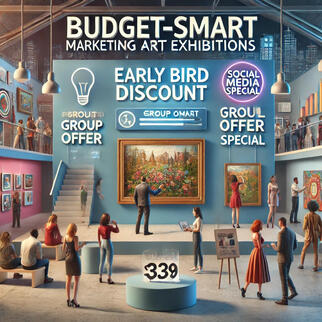
Monika
Business Analyst | Administrator
About Me
I am an accomplished Business Analysis professional with a vision for crafting innovative and sustainable solutions that bridge organizational goals with community impact. With over seven years of experience in process optimization, stakeholder engagement, and data-driven strategies, I have consistently delivered measurable outcomes that drive growth and efficiency.A lifelong learner, I combine a technical foundation in engineering with a recent specialization in business analysis and professional communication from MacEwan University. My leadership style is grounded in collaboration, strategic thinking, and a results-oriented mindset. I thrive in environments that challenge the status quo, seeking to transform complex challenges into actionable strategies.
This elevator pitch was created for the Business Analysis Portfolio Program – Communication Phase by FiNOM, emphasizing how strong communication skills contribute to impactful presentations and play a vital role in achieving successful project outcomes through complementary competencies.
Featured Projects
Art Eco System In Edmonton

Objective
To develop a dynamic, inclusive, and sustainable model for Edmonton’s arts ecosystem that addresses financial instability, limited accessibility, and hesitant audience engagement.Background
Edmonton boasts a vibrant arts scene but faces challenges that hinder its growth:Funding Instability: Over-reliance on fluctuating grants and donations leaves organizations vulnerable.
Hesitant Audiences: Post-pandemic, reduced turnout and rising ticket prices deter diverse demographic engagement.
**Competition: ** Other entertainment options, such as sports and digital media, overshadow arts events.
Limited Accessibility: High costs and a lack of diverse programming exclude key groups, such as students and low-income families.Analysis:
A SWOT analysis highlighted Edmonton’s cultural strengths while identifying opportunities to diversify funding, enhance digital outreach, and innovate programming. Benchmarking against global leaders like France and Italy revealed best practices in government grants, loyalty programs, and cultural festivals that Edmonton could adapt.Proposals and Solutions
1. Digital Event Platform:
• Centralized platform for event discovery, ticket sales, and loyalty programs.
• Virtual exhibitions and online workshops to broaden reach and accessibility.
• User-generated content to drive community engagement.2. Strategic Partnerships:
• Collaborations with local businesses for co-branded events and sponsorships.
• Bundled offers such as "dinner and art show" packages to attract diverse audiences.3. Inclusive Programming:
• Themed exhibitions featuring Indigenous, multicultural, and contemporary art.
• Affordable options like "pay what you can" days and family discounts.4. Enhanced Marketing Campaigns:
• Digital outreach using influencers, social media, and interactive campaigns.
• Community-centric marketing to increase visibility among underrepresented groups.Recommendations:
• Implement loyalty rewards and discounted pricing strategies to increase attendance.
• Use partnerships and crowdfunding to diversify funding sources.
• Highlight Edmonton’s cultural diversity through programming that resonates with all communities.Outcomes:
The future state envisions a thriving arts ecosystem where attendance grows by 20%, funding diversifies by 10%, and culturally inclusive events foster community pride and engagement.
Sustainability

Objective
To address Edmonton’s urban sustainability challenges by integrating green infrastructure solutions that reduce energy consumption, improve air quality, and enhance stormwater management.Background
Urbanization has strained Edmonton’s infrastructure, leading to:High Energy Use: Conventional buildings lack energy-efficient systems.
Stormwater Issues: Insufficient green spaces and poor management contribute to urban flooding.
Environmental Degradation: Reduced biodiversity and air quality impact residents' well-being.Analysis
Inspired by global case studies, such as the Bosco Verticale in Milan and Chicago’s City Hall Green Roof, the project analyzed Edmonton’s urban landscape and proposed adaptive solutions. Stakeholder engagement focused on local governments, businesses, and residents to ensure community buy-in.Proposals and Solutions1. Implement Green Roofs:
Vegetative layers that insulate buildings, reduce urban heat, and manage stormwater.
Example: Chicago City Hall's green roof, which lowered urban temperatures and improved drainage.2. Construct Greenery Buildings:
Integrate plants into building facades, creating visually appealing and sustainable urban structures.
Example: Bosco Verticale’s residential towers, which provide natural insulation and air purification.3. Adopt Biophilic Design:
Incorporate natural elements into architecture to boost productivity and well-being.
Example: Google’s biophilic office spaces promote sustainability and employee satisfaction.4. Install Green Walls:
Vertical gardens for existing and new structures, improving aesthetics and insulation.
Example: CaixaForum Madrid’s green wall showcases eco-friendly design in public spaces.Recommendations
• Collaborate with local policymakers to incentivize green infrastructure through subsidies and grants.
• Conduct training programs for architects and builders to adopt sustainable practices.
• Engage the community through public workshops and educational campaigns to foster support.Outcomes
• The project envisions Edmonton as a leader in sustainable urban development, with:
• Reduced energy consumption and carbon footprint.
• Enhanced stormwater management, mitigating urban flooding risks.
• Improved quality of life through cleaner air and vibrant green spaces.

